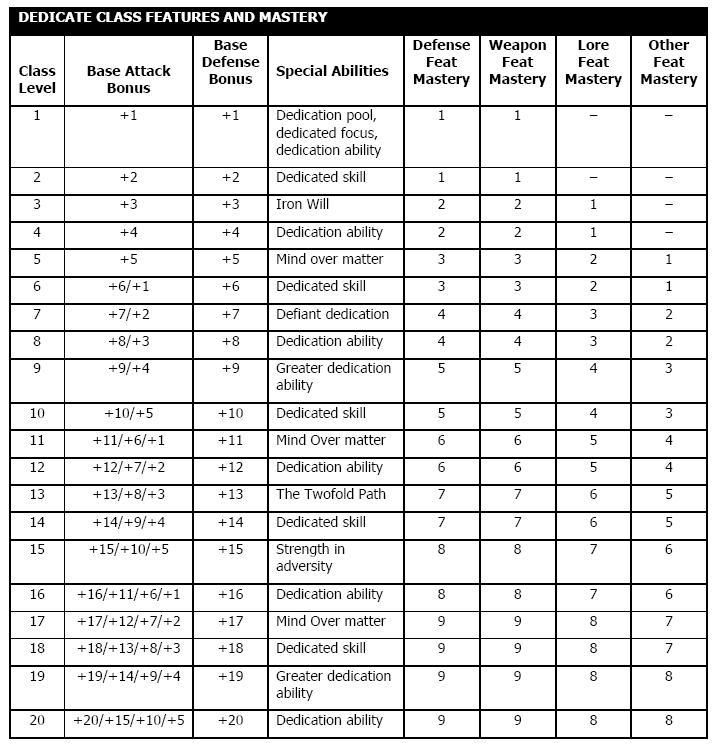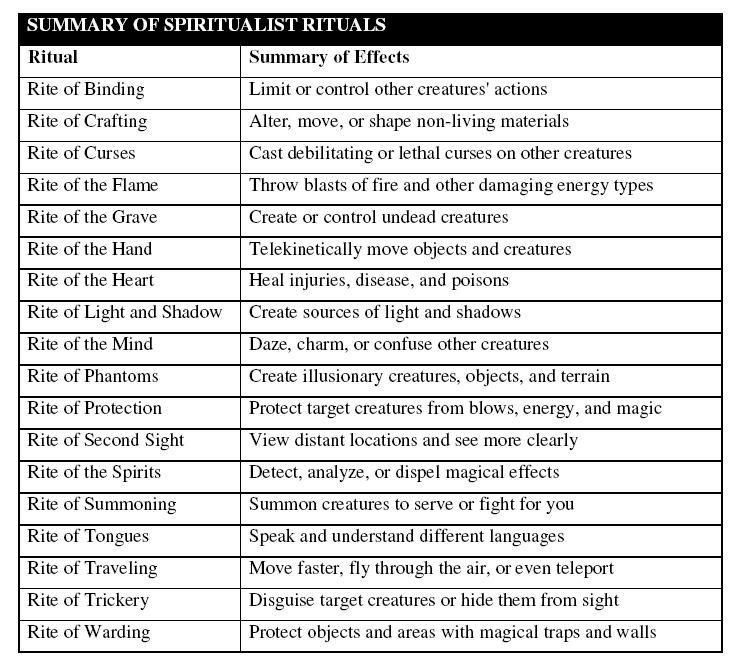Capellan
Explorer
Trait Talking
The traditional races of fantasy RPGs were replaced in Iron Heroes by traits: each character gained two of these special abilities in place of the racial abilities gained in other OGL fantasy games.
Iron Heroes provided 36 traits: twelve each from the three categories of Physical, Mental and Background traits. These three dozen traits provided a good breadth of abilities and suited a wide variety of character concepts. However, if you had four to six player characters in your game, then it would only take two or three characters each before some traits would inevitably be re-used.
The Iron Heroes Player's Companion adds 21 new traits; seven for each of the three categories. These traits provide you with more options for your characters both by supporting entirely new character concepts, and by offering new ways to represent an existing idea. For example, if part of your character concept is her dogged tenacity and durability, you might previously have represented this through the "Tough as Iron" or "Resilient Toughness" traits. Now you can choose the "Robust" or "Vitality" traits instead, which offer benefits that also fit this concept, though with very different mechanical effects.
In addition to simply offering more traits, the Player's Companion sets out to integrate these new traits more fully with other parts of the Iron Heroes system. The original 36 traits generally provided stand-alone benefits, or skill-based benefits such as free ranks or a bonus on certain checks. The traits in the Player's Companion provide these sorts of benefits, but they also interact with other system concepts. For instance, the "Child of Omen" trait is the first trait to provide access to a new token pool. Whenever a Child of Omen rolls a '1' on an attack roll or saving throw, she gains an Omen Token which she can use on other rolls at a later time.
Another new way interaction between traits and the wider Iron Heroes system is that some traits now provide bonuses to a character's mastery rating in respect of specific feats. This mechanism adds a new dimension to character creation by allowing a character to focus very strongly on a specific 'key feat' (for instance, it's very useful for a berserker who wants to get access to the best Power Attack or Cleave feats as early as possible), or to shore up an area which fits your character concept but in which your character's class is not as capable as you would like (for instance, a dagger-wielding thief might use it to gain earlier access to Razor Fiend feats).
As the final part of this preview, here's the complete text of the "Reaver" trait, as presented in the Iron Heroes Player's Companion:
REAVER (BACKGROUND)
Raiding and pillaging other communities is a key element of your homeland's culture. You might engage in cattle-raiding expeditions with neighboring clans, for instance, or send out hosts of warriors to prove themselves in months-long sea voyages against other nations. Such raids are not seen as crimes in your homeland, but as a test of strength and ability.
Mechanics: Your people's focus on martial prowess makes them skilled warriors. Choose one weapon. If you would normally have proficiency with this weapon at 1st level, you gain a +1 bonus to attack rolls with this weapon. Otherwise, you gain proficiency with the weapon as a bonus feat. You gain this proficiency even if you do not meet the prerequisites for this feat.
In addition, select one of the following trait abilities.
Golden Horde: Your people are fast-riding horse archers who sweep down on unprepared enemies to carry off their supplies and riches. You gain a +2 bonus to Ride checks. When calculating your eligibility to take Mounted Archery feats, treat your Projectile feat mastery as one higher than it actually is. If you would normally have no access to Projectile feats, you are considered to have a mastery of 1 for the purposes of taking Mounted Archery.
Herd Raider: The warriors of different villages or tribes in your homeland raid each other’s herds of livestock in order to win glory and renown. You gain a +2 bonus to Handle Animal checks and a +2 bonus on Survival checks made to follow tracks.
Sea Wolf: Your people are expert naval raiders, ranging far and wide in search of booty and fame. You gain 4 ranks in Profession (sailor) at 1st level and 1 bonus rank in it at each subsequent character level.
Next Preview: Feats
The traditional races of fantasy RPGs were replaced in Iron Heroes by traits: each character gained two of these special abilities in place of the racial abilities gained in other OGL fantasy games.
Iron Heroes provided 36 traits: twelve each from the three categories of Physical, Mental and Background traits. These three dozen traits provided a good breadth of abilities and suited a wide variety of character concepts. However, if you had four to six player characters in your game, then it would only take two or three characters each before some traits would inevitably be re-used.
The Iron Heroes Player's Companion adds 21 new traits; seven for each of the three categories. These traits provide you with more options for your characters both by supporting entirely new character concepts, and by offering new ways to represent an existing idea. For example, if part of your character concept is her dogged tenacity and durability, you might previously have represented this through the "Tough as Iron" or "Resilient Toughness" traits. Now you can choose the "Robust" or "Vitality" traits instead, which offer benefits that also fit this concept, though with very different mechanical effects.
In addition to simply offering more traits, the Player's Companion sets out to integrate these new traits more fully with other parts of the Iron Heroes system. The original 36 traits generally provided stand-alone benefits, or skill-based benefits such as free ranks or a bonus on certain checks. The traits in the Player's Companion provide these sorts of benefits, but they also interact with other system concepts. For instance, the "Child of Omen" trait is the first trait to provide access to a new token pool. Whenever a Child of Omen rolls a '1' on an attack roll or saving throw, she gains an Omen Token which she can use on other rolls at a later time.
Another new way interaction between traits and the wider Iron Heroes system is that some traits now provide bonuses to a character's mastery rating in respect of specific feats. This mechanism adds a new dimension to character creation by allowing a character to focus very strongly on a specific 'key feat' (for instance, it's very useful for a berserker who wants to get access to the best Power Attack or Cleave feats as early as possible), or to shore up an area which fits your character concept but in which your character's class is not as capable as you would like (for instance, a dagger-wielding thief might use it to gain earlier access to Razor Fiend feats).
As the final part of this preview, here's the complete text of the "Reaver" trait, as presented in the Iron Heroes Player's Companion:
REAVER (BACKGROUND)
Raiding and pillaging other communities is a key element of your homeland's culture. You might engage in cattle-raiding expeditions with neighboring clans, for instance, or send out hosts of warriors to prove themselves in months-long sea voyages against other nations. Such raids are not seen as crimes in your homeland, but as a test of strength and ability.
Mechanics: Your people's focus on martial prowess makes them skilled warriors. Choose one weapon. If you would normally have proficiency with this weapon at 1st level, you gain a +1 bonus to attack rolls with this weapon. Otherwise, you gain proficiency with the weapon as a bonus feat. You gain this proficiency even if you do not meet the prerequisites for this feat.
In addition, select one of the following trait abilities.
Golden Horde: Your people are fast-riding horse archers who sweep down on unprepared enemies to carry off their supplies and riches. You gain a +2 bonus to Ride checks. When calculating your eligibility to take Mounted Archery feats, treat your Projectile feat mastery as one higher than it actually is. If you would normally have no access to Projectile feats, you are considered to have a mastery of 1 for the purposes of taking Mounted Archery.
Herd Raider: The warriors of different villages or tribes in your homeland raid each other’s herds of livestock in order to win glory and renown. You gain a +2 bonus to Handle Animal checks and a +2 bonus on Survival checks made to follow tracks.
Sea Wolf: Your people are expert naval raiders, ranging far and wide in search of booty and fame. You gain 4 ranks in Profession (sailor) at 1st level and 1 bonus rank in it at each subsequent character level.
Next Preview: Feats
Last edited:





